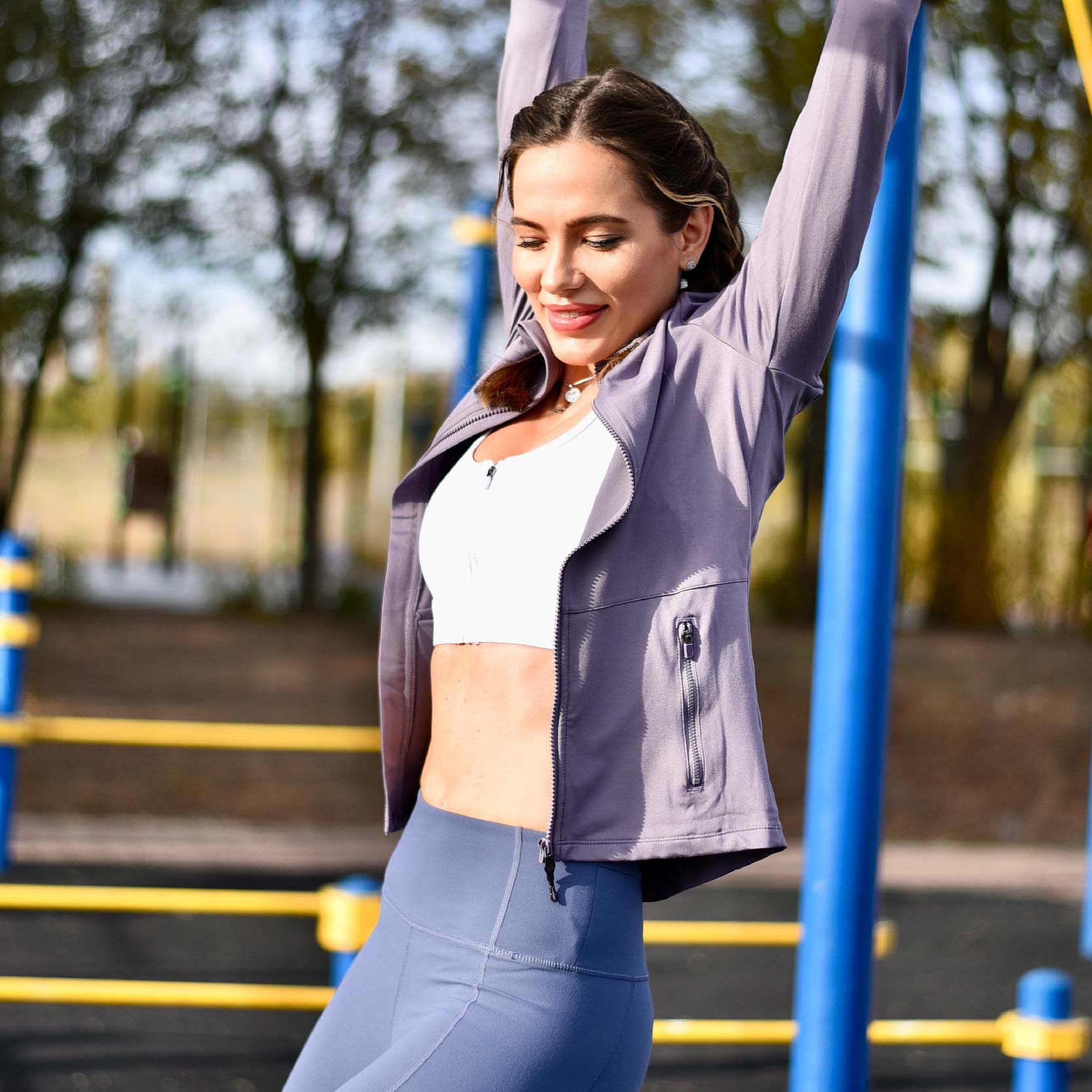How To Treat Office Ailments Through Yoga
Working out at the office is a fantastic way to boost your productivity while alleviating muscle discomfort or fatigue. If you have sat for too long and need stretching, there are many motions you can do where you are.
Ailments at workplaces go way beyond major industrial or construction industries. Issues can happen in various sectors and workplace contexts, including office situations. Musculoskeletal illnesses can be triggered or worsened by repeated movements, poor balance, and sitting for long periods.
The behaviors we develop at our desks, particularly when sitting, can lead to uneasiness and physical issues such as lumbar muscular tension, shoulder and neck pain, overweight, anxiety, backache, and frozen shoulders, Cervical spondylosis among others.
This post looks at how to treat office ailments through yoga. Let’s get to it!
01: Relaxation of the Scapulae and Neck Muscles
A muscular strain can make your neck tense or painful; the long Serratus anterior scapulae muscles dropping straight down the neck and through the shoulders suffer. Concentrating your efforts on keeping the strength and levator scapulae tendons flexible may keep you free and relaxed.
Here is what you can do while sitting in your office:
- Sit straight up and place your hands at your sides.
- Lift the right hand and touch the back, grabbing your right shoulder bone and pressing down.This technique rotates the shoulders, lengthening the muscular scapula even further before stretching it. You may avoid this technique if elevating the elbow over the shoulders becomes too difficult.
- Lower the chin until you feel a decent stretch on the back of your neck.
- Continue for thirty to sixty seconds or until the discomfort is relieved.
- Repeat the exercise on the opposite side.

02: Relaxing the Neck Muscles On Both Sides
You are not alone if your neck feels tight or aching. Neck discomfort is among the most prevalent office ailments today. However, just like any other body part, workouts and stretches may help strengthen and relax the tendons in your neck.
Before you begin, see your therapist if you are experiencing any discomfort. However, it is not ideal for anybody to struggle too much when exercising, and when you do, stop immediately. Here is what to do:
Tilt forward and backward:
You may do this while sitting or standing. Maintain a calm and steady pace.
The amount of calories you burn is determined by how fast you're jumping and how long you're doing the activity. Many people choose to do the 100-jump challenge, which is jumping rope for one minute straight without stopping or having to catch your breath.
·Begin by placing your head evenly between your shoulders and keeping your body upright.
·Continue for 10 to 25 seconds with your chin down. Breathe and gradually raise your chin.
·Lift your head and draw your chin backward. Continue for ten seconds before returning to the starting spot.
·Perform the cycle as necessary. Practice it daily.
Tilt to the side.
·Stand with your legs apart and both hands resting on your sides to perform this exercise.
·Turn your head to the right and attempt to contact your shoulder with your ear. Once you experience the strain, pause. Do not elevate your arm.
·Move to the starting point after holding for 15 seconds.
·Repeat on the opposite side. You can complete multiple sets and gradually increase the number to ten.
Rotation to the side
·You may do this exercise while standing or sitting.
·Maintain a straight back and a straight head above your shoulders.
·Tilt your head to the right gradually and feel the muscles stretch down your neck and shoulder on one side.
·Keep stretching for 25 seconds before gently turning your head; rep on the other side.
·Perform a maximum of ten cycles.

03: A Trigger-Point Ball Relaxation
A trigger-point ball relaxes both sides of the oblique muscles and a frozen shoulder. It focuses on the lateral core muscles. When stretching;
·Put your shoulders on the table with your head square. You can get a deeper stretch by placing both hands under the head.
·Roll back after 25 seconds. Make sure you handle the opposite side. You can do any of the stretches shown below. If you experience a lot of discomfort, stay with the second choice.
·To relax the lateral core muscles, stand approximately one foot from the wall. Put your hand adjacent to the wall above your body and rest it. Rest the other hand against the wall at chest level.

04: Stretching the Soft Tissues and Joints Surrounding the Spine
Soft tissue strain in the groin, hips, back muscles, and calves can exert undue tension on the rotator cuff region, producing or worsening discomfort. Stretching specific muscle groups such as Hamstrings and Calves may help to relieve joint swelling and improve motion range.
Stretching the Hamstrings:
·Resting on a seat with either leg resting on another surface;
·Reach for your feet in this posture to softly flex the hamstrings.
·Reach for your feet in this posture to softly flex the hamstrings.
·Keep stretching for 25 seconds, and then change your legs multiple times to relax both hamstrings.
Squats against a wall:
·Pose with your shoulder on the wall and your legs around one foot away.
·Squat about halfway down, keeping your legs slightly apart, and let your knees not extend beyond your feet. Continue for ten seconds, and then do it eight times more. Practice this twice a day.
Stretching Calves:
·Stand against the wall, and then stretch your calves.
·Maintain a firm foot with the heel on the ground and the foot straight forward.
·Maintain a firm foot with the heel on the ground and the foot straight in front.
·Flex the front knee gently and bend toward the wall. Feel your calf stretching. It is critical to hold your heel on the ground throughout the exercise.
·It is critical to hold your heel on the ground for the duration of the stretching.
·Keep the position for 25 seconds.
·Get to your starting point and repeat three times on both sides. Practice this twice a day.

05: Giving the Spine a Typical Physiological Curvature
Giving your spine a typical physiological curvature enables equal density and dynamic agility. The spine bends in various directions:
·The cervical spine bends inward gently, or has a lordotic curvature or reverse curve.
·The upper spine stretches outward, forming a perfect curve with a front-opening flexion curve.
·The lower back spine bends inward and has a reverence curve like the upper back spine.
Spinal curvature can be excessive in any direction, resulting in discomfort, stiffness, and cerebral malfunction. Most aberrant curvature is harmless, while others need medical attention.

06: Relax Wrist Tendons and Relieve Pain
These practices for relaxing wrist tendons and relieving pain may suit a specific disease or help in the process of recuperating. Begin each workout gradually and reduce the intensity when you feel discomfort.
You should seek guidance on when to begin these workouts and what will be most beneficial to you. How to Perform the Exercises;
Flexion and extension of the wrist
For proper wrist flexing and stretching
·Rest your arm on a desk, palm downwards; let your afflicted wrist stretch beyond the desk.
·Twist your wrist, raise your hand, curl it into a fist, drop your hand, then release your fingertips. Keep each pose for approximately five seconds.
·Do these ten sets.
Flipping of hands
·Sit and rest your arm, planting your wrists over your thigh with your palm facing down.
·Turn your hand so the backside is on your thigh and your palms are facing up. While still sitting and maintaining the arm position, play with the palms up and down.
·Repeat this for ten sets.
Radial and ulnar deviations of the wrist
·Stretch out your afflicted hand or both, palms facing down, directly in front of you.
·Gently move your wrists sideways and keep doing this as much as you can. Keep each position for around five seconds.
·Do this for about ten sets.
Stretching the Wrist Flexors
·Stretch your forearms in front of you, with the wrists pointing out.
·Twist your wrists and lift your hand towards the sky.
·Carefully twist your wrist with your hand till you feel some strain in your forearms.
·Maintain the stretching for about fifteen to thirty seconds.
·Do this for about five sets.
·While standing or sitting, ensure that you keep a proper position. Resist keeping your neck rigid or at a bent angle.
Follow-up therapy is an essential component of your therapy and wellness. Keep all appointments, and if you have any concerns, seek assistance. It is also an excellent strategy to be aware of your diagnostic findings and maintain a record of any prescription.

07: Relax the Nerves in the Arms
The technique of relaxing the nerves prevents soreness in the shoulders, neck, elbows, and wrists. Here is what to do;
·While standing or sitting, ensure that you keep a proper position. Resist keeping your neck rigid or at a bent angle.
·Make a habit of walking around more if your work entails sitting or standing at a workplace, a workstation, or a work table.
·To keep your neck and shoulders from becoming tense and uncomfortable, carefully move them into their full range of motion frequently.
·If you are working on a desktop, position the monitor and keyboard in front of you to avoid twisting your whole body or head.
·Put the mouse close at hand to limit straining the mouse hand to reach it; stay closer to the system to work seamlessly.
·A good chair that supports your body and meets all your requirements might also assist you in maintaining an excellent sitting posture.
·Whenever talking on the telephone, do not raise the speaker to your ear using an extended shoulder. If you spend a lot of time on phones, invest in headsets.
·Avoid undertaking any physical labor that causes pain.

08: Increasing the Strength of the Posterior Forearm Rotators
The rotator tendon treatments are only for prevention. Try not to undertake any of these activities if you have discomfort in the region or a rotator cuff injury. Ask for the counsel of a trained healthcare professional or medicinal expert instead.
In these rotator cuff workouts, body weights are essential. You can customize tension band activities to produce the same results and relax your body.
Maintain a weight limit of 6 pounds. Do three sets of 20 cycles of the activities shown below in the sequence listed.
External Turning
·Lean on the other side of your dominant arm.
·Begin by grabbing the dumbbell and flexing the elbows at a 90-degree angle while maintaining the arms at your sides.
·Maintain your elbows at 90 degrees and swing your forearm outwards.
· Return to the starting point.
·Maintain a grip on your side with your elbow. Place a wrapped towel over the forearm and the sides to ensure seamless movement and firm posture,
Internal Turning
·Place yourself on the side or hand that you use most at work.
·Begin by resting on a table or bench, grasping a dumbbell, and flexing your elbow at 90 degrees while maintaining your elbow at your side. The arm should start slightly lower than parallel to the ground.
·Raise the forearm, holding your elbow at 90 degrees.
·Back to the starting point
·Maintain a grip on your side with your elbow. Place a rolled towel between your elbow and the side to aid movement and keep the shape.

09: Reducing Sedentary Behavior
At workplaces, you should Sit less and move more. Sedentary behavior has emerged as a big problem for public health. Sedentary habits are more common in many countries, although they may stem from many other serious health issues.
A physically active and healthy lifestyle can dramatically lower the likelihood of developing chronic diseases, emotional health conditions, and dying prematurely.
Make it a habit of standing up for two minutes after every half hour of sitting to address the issues of someone becoming inactive and sedentary.

Conclusion
As an employee or a business owner, you have a lot on your plate daily. It is also true that you value your wellness and would like to manage it, especially with a busy schedule at work.
That is why these workplace yoga positions are so crucial. You may help melt away growing anxieties and establish a unique paradise in minutes eliminate lumbar muscle strain, rejuvenated and eager to face whatever problems you encounter at work.






